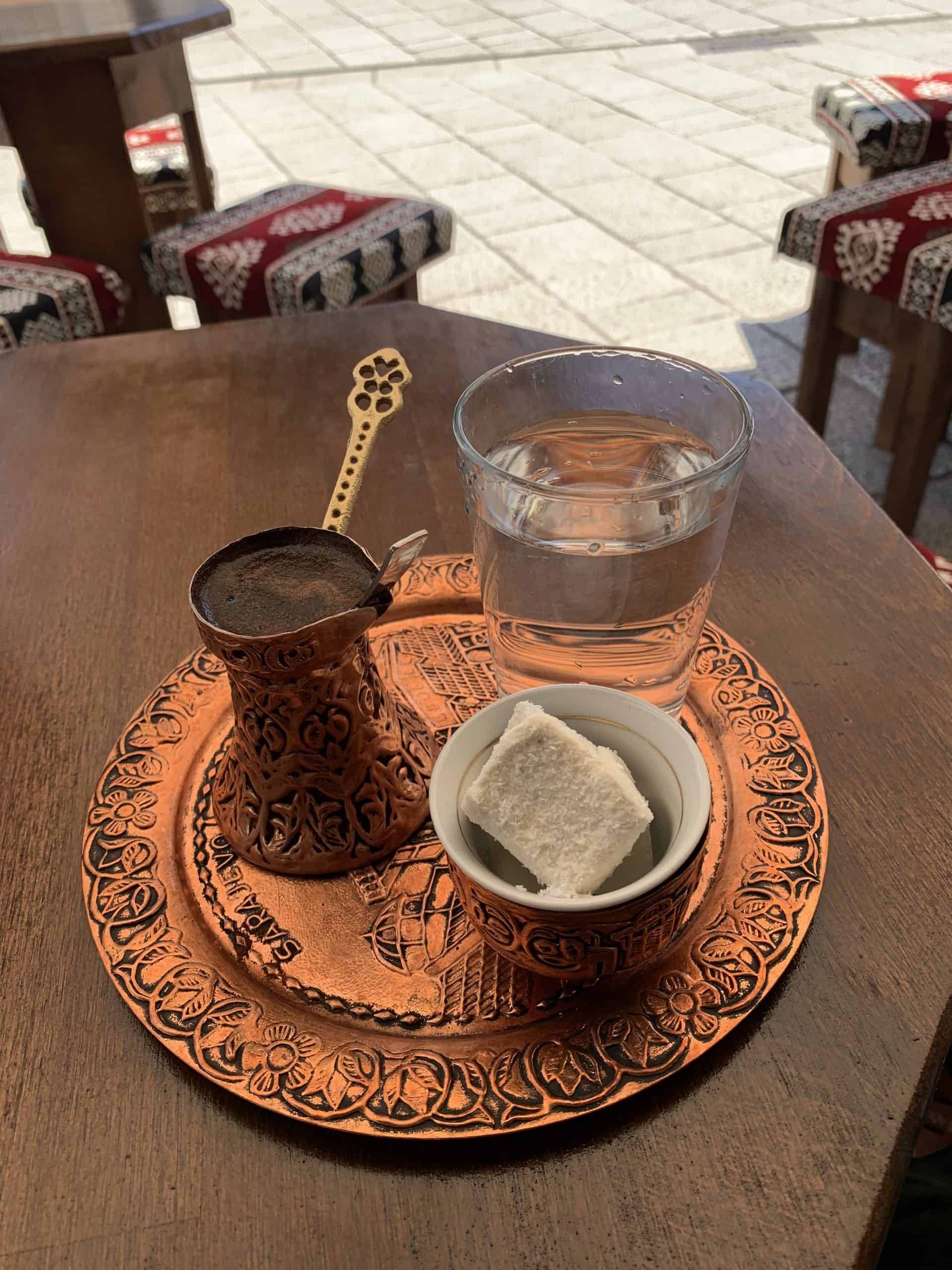
Bosnian coffee is not Turkish coffee and the Bosnian population is very keen to point this out.
There are mainly two differences. The first concerns sugar: in Turkish coffee it is put during preparation, in Bosnia it is served separately. The second difference is the way coffee is served: in Bosnia the džezva, the saucepan in which coffee is prepared, is brought to the table, while in Turkey the cevze, the Turkish name of the same object, remains in the kitchen.
How to make Bosnian coffee
Bosnian coffee is prepared and served inside the džezva, a copper saucepan with an elongated neck and a thin handle that stretches upwards.
Tradition has it that the preparation of Bosnian coffee begins with the roasting of raw coffee and the pulverization of the same in a brass grinder.
This very fine powder is then placed inside the characteristic saucepan and boiling water is poured over it.
The džezva is then transferred to the stove and left there until it turns into an almost thick liquid.
The coffee is brought three times almost to a boil, removing it and putting it back on the fire several times.
The džezva arrives on the table along with a glass of fresh water, a bowl containing sugar cubes, a teaspoon, a low ceramic cup without handle and a lokum, a small typical dessert.
The džezva contains two portions of coffee, but care must be taken not to pour the residues of the bottom as well.



